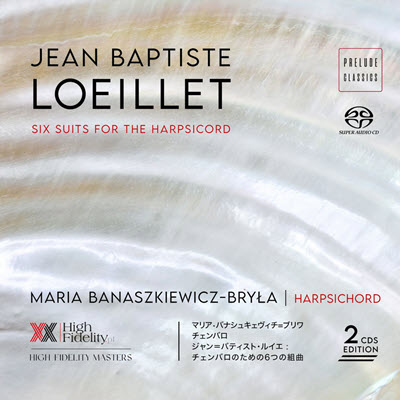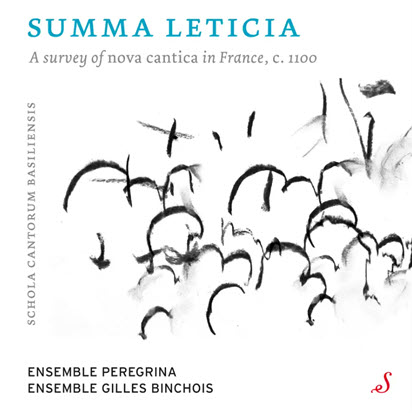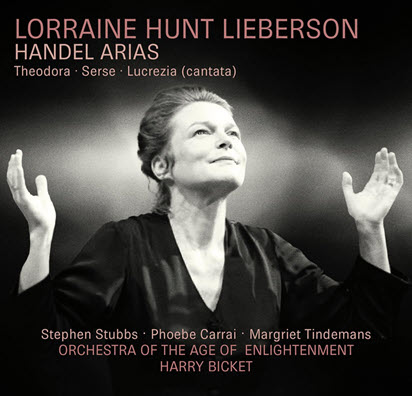by Steven Silverman
Published July 1, 2025
Jean Baptiste Loeillet of London: Six Suits for the Harpsichord. Maria Banaszkiewicz-Bryla harpsichord (2-CD set)
‘This recording is a primer in showing that having great rhythm doesn’t mean playing precisely in time’
A new, outstanding recording makes a very strong case for the keyboard suites of Jean Baptiste Loeillet.
Mr. Loeillet of London lived from 1680-1730 (not to be confused with his identically named musician first cousin of Ghent). Born in the then Spanish Netherlands, he moved to London in 1705 and had a successful career as a performer (on multiple instruments, not just harpsichord), teacher, and to some extent composer. In England his first name sometimes became “John.” He is credited with organizing (and performing in) the first London performances of Corelli’s Concerti Grossi.

The six keyboard suites on this recording were published in 1723, coincidentally the same publication year of Handel’s celebrated initial collection of keyboard suites. Loeillet’s differ from the Handel suites, being without preludes and contrapuntal movements, and are not as virtuostic. But they evince fine craftsmanship, idiomatic keyboard writing, and, to no small degree, inspiration. (They also differ from the Handel suites in that the title page of the publication reads ‘suits’).
Each suite contains an allemande, corrente (the fast Italian dance in 3/8 time, the one exception being the second movement of the A Major suite, which is a French courante though still styled as a corrente), saraband (sarabanda), and gigue (giga). Each also contains a minuet (or menuet), and either an air (styled aria) or a gavotte. Most of these movements are in the familiar bipartite pattern, with the second section beginning in the dominant. The notable exception is the sarabande from the F major suite, which has an extended section — essentially a trio, and quite a lovely one — in f minor. French influences (and also Purcell’s) are most apparent in the allemandes, as well as in the menuet en rondeau from the D major suite. The correntes are in an Italian style, and some of the gigues suggest familiarity with the final movements of the Corelli violin sonatas.
Much of the writing, even in the faster movements, has a vocal quality and one of the many strengths of this recording is the performer’s ability to project that lyric element.
That performer, Maria Banaszkiewicz-Bryla, was trained in Poland, and now teaches at her alma mater in Poznan. She has concertized worldwide, and has recorded extensively. It is an absolute pleasure to hear her play Loeillet’s music. The playing is technically impeccable, and not just in matters of clean passagework, coruscating trills and mordents, and well-placed articulations. Some of the writing, including Alberti bass patterns in some of the airs and successive big block chords in several of the gigues, has the potential to sound awkward or cluttered, but the harpsichordist gets these all to sound natural. The Sarabande and Menuet from the F Major suite have some passages where the left hand starts playing in octaves (almost out of the blue), and she likewise brings this doubling off unobtrusively.
Her readings are keenly sensitive to harmonic and melodic nuance, bringing myriad details of the music to our attention by subtle means — slight staggering of hands that bend the sound, discrete rubato (lingering on individual notes especially), natural-sounding inegale — without impeding the music’s flow. This unfailing sensitivity and rhythmic flexibility is not reserved for the slower dances, but is used, tellingly, in the faster ones as well. We never get the feeling that this is just a bunch of eighth or sixteenth notes chugging along. Indeed, this recording is a primer in showing that having great rhythm doesn’t mean playing precisely in time.
Imaginative registrations are another strong point. She sometimes changes registrations on repeats, uses lighter registrations for many of the sarabandes, and appealingly uses the buff stop (part of the time for both hands, and in others to accompany the upper manual) in several of the minuets. Echo effects via changed registration — 8+8+4 and upper manual for the echo — worked well in the g minor Sarabande. She adds the four-foot stop for the gigues from the Eb Major and F Major suites, which aids in projecting these dances’ rollicking character.
Banaszkiewicz-Bryla takes most of the repeats, and when she does, she adds ornaments to the repetition. There is no danger of just hearing the same thing played twice. The added ornamentation is well-taken (upwards and downward slides to fill in intervals are a favorite), and, quite properly, she ornaments in the faster dances as well as in the more leisurely ones. She also adds witty turnarounds at each double bar to initiate a repeat. One minor reservation is that all the ornamentation was in the right hand, at least that I noticed. There’s no harm in ornamenting the bass as well.
Banaszkiewicz-Bryla goes against conventional wisdom by playing a lot of ornaments ahead of the beat, as well as rolling chords ahead of the beat. This didn’t bother me because everything sounded natural and well-placed. Still, a little unusual. These readings are unfailingly expressive and alive. This recording should be heard. Highly recommended.




